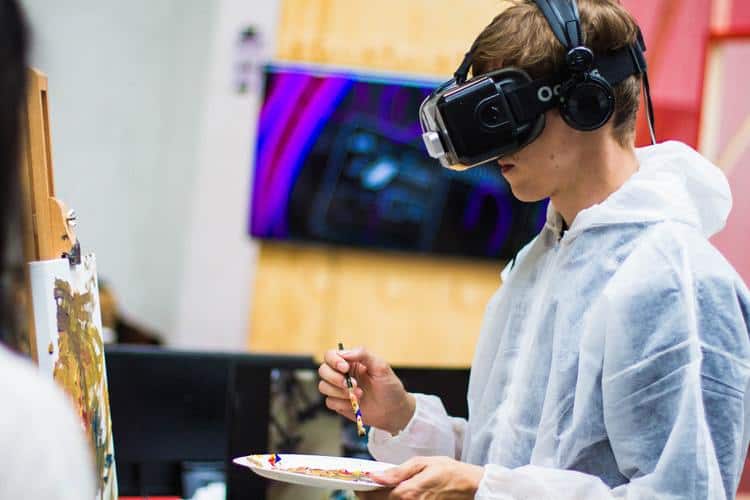Virtual reality (VR) and augmented reality (AR) are two of the most recent technologies that have been brought to the public’s attention mainly because they are now being packaged by companies as the next big thing in consumer electronics. Indeed, with the introduction of newly-minted gears such as Oculus Rift, Samsung VR, Google Cardboard and HTC Vive as well as Niantic’s hugely popular mobile game Pokemon GO, both VR and AR are now firmly entrenched in the public’s consciousness.
But there is just one thing about these emerging technologies that had the public confused for quite a while now; are both VR and AR actually referring to the same thing or are they fundamentally different? For some, who vaguely deduced that since both actually refer to an altered perception of reality enhanced by computers, assume the two terms must be just two alternate ways of referring to the same thing. Others, however, argue that since marketers promote them as two different technologies, they must be totally different from each other. At this point, however, most of these people would agree that explaining the finer details of their differences would be a task to bothersome to undertake.
Actually, both viewpoints are correct, partially that is. As mentioned earlier, it is correct that both technologies can alter our perception of reality. While they share this significant reality, there is one thing that they also significantly differ – the degree of immersion -, which need to be discussed in more detail to be fully understood.
Virtual Reality
With virtual reality, a person’s immersion into the virtual world is more intense. When you don one of those latest VR gears in the market, you’ll know how immersive the experience is going to get. While inside the virtual world, people sometimes report that the feeling of movement is even there. For instance, have that exact feeling one gets when walking up the stair in the real world or that unique exhilaration and dread when one finds himself unwillingly strapped aboard a speeding roller coaster.
Simply put, it is as if you left the real world behind. With the right gear, VR technology will be so immersive that you will be blind to the real world as you are practically trapped inside a computer-generated world. Depending on the programming, you will be so busy hunting down dragons or perhaps driving your own fighter jet in the middle of an exciting dogfight that you simply won’t care what is currently going on in the real world.
Augmented Reality
On the other hand, augmented reality will not rob a person’s awareness of his current real-life environment. Rather than trapping a person’s perception of a virtual world, AR aims to enhance a person’s perception of the real world. This is achieved by taking into account the actual world and adding or augmenting the reality with some computer enhancements.
A good example of the AR technology in action would be Niantic Lab’s hit mobile game Pokemon GO. As a Pokemon trainer, a player is tasked with the game to look for Pokemon with its famous catchphrase to “collect ‘em all.” Thus, players venture into the real world in search of these monsters, which, can only be seen via their mobile device as they just appear superimposed over the image of the real world captured by their smartphones.
Main Differences
As mentioned earlier, the goal of AR is to augment or enhance one’s perception of the real world by introducing a layer of computer enhancements. At all times, AR users are aware of the real world but, at the same time, they have the ability to interact with the layer of computer added features and enhancements.
VR, on the other hand, aims to totally shut off users’ perception of the real world. Instead of real-world objects to interact with, VR users are presented with a totally fabricated virtual world for them to play with. With quality programming and equipment, the technology has the potential to offer a very immersive experience indeed.
Also, the equipment used to deliver the two technologies is also markedly different. For virtual technology, users are usually required to don head-mounted gears coupled with some hand-held controller. The headgear not only displays the virtual world to the user but also acts as a barrier between the real world and the user’s field of vision. The controller is then used to navigate inside the artificial world and can be used to interact with it.
Perhaps because there is no need for AR technology to shield its users from inputs of the real world, its method of delivery is usually done via mobile devices such as a tablet, smartphones, and laptops. Also, Microsoft is now fine-tuning its augmented reality glasses HoloLens, which is basically a clear glass with the cool ability to project holograms on top of the real view. In this manner, the gadget could potentially be as immersive as VR gadgets.
Uses of VR and AR
The marketing blitz for these two new technologies is not actually just pure talk; the potential application for both VR and AR is indeed huge. At the moment, gaming companies have already realized the market potential for these technologies and are now scrambling to offer new titles that will showcase either technology.
But VR and AR’s potential go far beyond gaming. VR has already been successfully harnessed as a marketing tool where potential clients could visit a virtual store or business and browse their wares in the same manner as if they were physically present at a physical store.
Both technologies are also being deployed as design tools. Essentially, VR and AR can be used to visualize the final design of a car or building and make corrections to potential problems even before the first foundation has been laid.
VR can also be used in education. Any field, be it surgery or aircraft maintenance, can use the technology to train students in the safety of the virtual environment.
Speaking of safety, augmented reality could make commuting a lot safer for everyone. There are plans to install AR into a car’s windshield essentially making it one giant AR-powered screen. With the right programming, AR can point out potential hazards way before they will be detected by the driver under normal eyesight. For instance, hard-to-see potholes, pedestrians crossing a poorly-lit street or a car suddenly changing lanes can all be highlighted by the system giving the driver precious time to execute life-saving evasive maneuvers.
Mixed Reality
But the future of virtual and augmented reality technologies may not be as separate as they appear at present. Actually, Microsoft’s HoloLens can be considered as one of the pioneers which utilize both elements of AR and VR, combining real-word and computer-generated digital objects for users to interact with. Dubbed as a mixed reality (MR) experience, perhaps there will be no need to distinguish between AR and VR in the near future after all.

